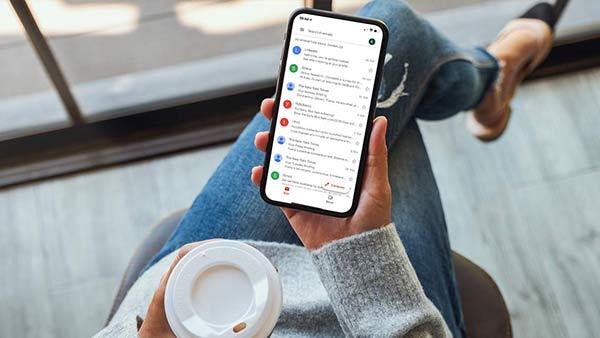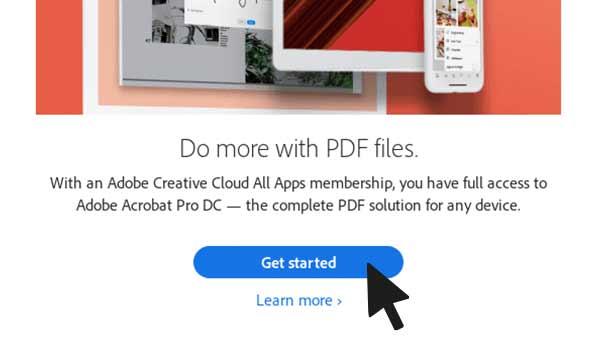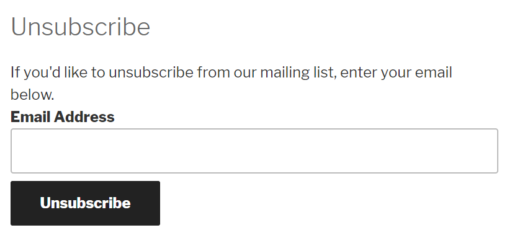Email analytics: Measure your way to better email performance
| November 11, 2020

“One accurate measurement is worth a thousand expert opinions.” – Grace Hopper
It’s a well-known business adage: you can’t improve what you can’t measure. While the universality of that statement is debatable, measurement definitely helps. That’s one of the reasons email marketing is such a popular tool. Its success is easy to quantify with clicks, opens and other metrics.
But what exactly are the key performance indicators on your analytics dashboard? And what do they tell you about your campaigns? In this overview, we’ll cover the basics of email analytics, so you can get more out of your email marketing.
What is email analytics?
Email analytics is the practice of measuring how people interact with email campaigns. Marketers use analytics to make their email marketing more successful. They might track the performance of individual campaigns, or evaluate their email marketing strategy as a whole. Key analytics metrics include click-through rate, open rate and unsubscribes.
Important email analytics metrics explained
Most email marketing tools use embedded tracking features to automatically gather data for each campaign you send. Let’s look at the key metrics one at a time.
Open rate
What it is
Percentage of email recipients who opened the email.
Why it matters
Open rates are very straightforward: they show how many people opened your email. They’re a popular metric, in part because they’re easy to understand. But be careful: In most cases, open rates are not a good metric for overall success.
Instead, use open rates to narrow down what might be holding your campaigns back. They’re without question the best metric for whether subject lines are interesting or enticing. Open rates can also shed light on bigger-picture questions, like whether you’re sending the types of emails customers want to receive.

Click-through rate
What it is
Percentage of email recipients who opened the email and clicked a link inside it.
Why it matters
If you could only choose one metric to measure the success of a campaign, email click-through rate would be a good choice. While other metrics are great for fine-tuning, click-through rate is the best indicator of how well an email or campaign did overall.
After all, you’re emailing customers for a reason. Maybe you want them to visit a landing page, watch a tutorial or download an eBook. There are several steps to get them there, and clicking through is crossing the finish line.

Click-to-open rate
What it is
Percentage showing how many of the people who opened the email clicked a link inside.
Why it matters
Click-to-open rate measures how many of the people who opened the email were persuaded to click. This tells you whether your messaging, copy and email design are doing their job. If lots of people open an email, but nobody clicks, focus on improving the emails themselves, rather than big-picture issues like content strategy.
Conversion rate
What it is
Percentage of email recipients who completed the desired action, like purchasing a product or booking a demo, as a result of your email campaign.
Why it matters
We said before that click-through rate was the best indicator of the overall success of an email campaign. That’s not entirely true. Your end goal isn’t just to get customers to click a link and visit your website. You want them to visit the website and buy something (or fill out a lead generation form, etc.). That’s what conversion rate measures.

Although conversion rate is a more accurate metric of success, it’s harder to calculate. That’s why click-through rate remains the more popular choice.
However, hard doesn’t mean impossible. If you’re using an integrated tool for both sales and email marketing, your provider may include conversion rates or revenue metrics on your email analytics dashboard. Another option are UTM tracking links, which allow marketers to trace activity on their websites back to an email campaign or other source.
Whether it’s worth the trouble depends on your specific circumstances. In many cases, click-through rate is a good enough proxy.
Unsubscribes
What it is
How many people unsubscribed from your mailing list after receiving an email (either a total or a percentage of recipients)
Why it matters
Most email marketing metrics are positive ones: subscriptions, opens and clicks all indicate some level of engagement. Sure, if the numbers are low they show a lack of engagement, but not all email content is for everyone. Unsubscribes send a much clearer message that customers do not like what you’re sending.
Preventing unsubscribes altogether isn’t a realistic goal, but do watch for patterns. If certain emails cause lots of people to unsubscribe, maybe that’s not right type of content for that list. A rising unsubscribe rate isn’t always cause for panic, though. Losing a handful of subscribers might be worth it if your conversion rates go up too.

The metrics we’ve looked at so far apply to individual email campaigns and their performance – though you can also track them over time.
But there are also email analytics metrics that pertain to your mailing lists themselves. They’re worth noting too.
Subscribers
What it is
Total number of email addresses in your address book, or on a specific mailing list.
Why it matters
Before you can send someone marketing emails, you need to have their email address.
Your subscriber totals show whether efforts to grow an email marketing audience are working. Even after your list reaches a healthy size, it’s always worth trying to bring in new subscribers. The beauty of email marketing is that as your contact list grows, you reach more and more people with the same amount of effort.

Bounce Rate
What it is
The percentage of emails sent that couldn’t be delivered.
Why it matters
Bounce rate reflects the health of your email contact list. In general, the more subscribers the better. But consider this: Would you rather have a list of 25,000 email addresses with a 1% bounce rate or list of 30,000 email addresses with a 33% bounce rate? Even though it’s smaller, the first list will allow you to reach 5,000 more people.

Most email analytics distinguish between hard bounces and soft bounces. Soft bounces are the result of a temporary problem, like the recipient’s inbox being over capacity. Hard bounces mean the email address no longer exists – or was fake to begin with. It’s important to remove hard bounces from your contact list. Too many bounces, and email clients will start labeling your messages as spam.
How to use email analytics to send better marketing emails
Diagnose problems
Each email analytics metric corresponds to a hurdle customers have to clear on the path to a conversion: Do you have the person’s email address? Did they get the email? Did they open it? Did the contents of the email convince them to click? Did the click result in the desired action?

Although you’ll lose customers at each hurdle, the goal is to optimize campaigns to get the largest number of people possible through to the end.
The other metrics provide clues about how to get more customers to the finish line, showing you where in the process you’re losing people.
If the open rate is high, but nobody’s clicking, you know to focus on the contents of the email. If open rates are low, experiment with different email subject lines. Or take a step back to make sure you’re sending the kinds of emails your contacts want to receive.
Run A/B tests
A/B tests allow you to measure the impact of small changes by pitting two versions of the same email against each other head-to-head. Most email providers automate the process, sending each version out to a small test group, then sending the winning version to the rest of the list.

You can A/B test almost any aspect of an email. Pit two subject lines against each other. See if one design layout outperforms another. Compare click-through rates with different button colors.
In most cases, the ‘winner’ will be the version of the email with the higher click-through rate. Very rarely, you might send an announcement-style email you don’t expect people to click through. In this case, you can still A/B test subject lines using open rates as the key metric.
See the big picture
One of the great things about email analytics is that they provide immediate feedback. Just a day after sending a campaign, you’ll have solid performance data at your fingertips.

That can make it easy to get bogged down in details and zero in on just one metric. Instead, take a step back to consider how all the metrics work together.
For example, increasing your email cadence might cause an uptick in unsubscribes, but also more conversions. Is losing a few subscribers worth getting more engagement out of those that remain? In most cases, yes.
Similarly, a clickbaity subject line might make your open-rate skyrocket. But it’s only worth it if the click rate rises too. If customers open the email only to be disappointed by what they find inside, you’ve done more harm than good.
How email analytics help you understand your customers
You’re not tracking email analytics just because it feels great to watch numbers go up (although it definitely does). Email analytics are a direct, quantifiable way to know if your email marketing is giving customers what they want.
You can read articles about what subject lines perform best until you’re blue in the face, but email analytics tell you for sure what your customers will respond to. Every campaign is a specialized study in your specific customer base.
The result: Everyone wins! Your customers get a better email experience, and you get more leads and sales.
